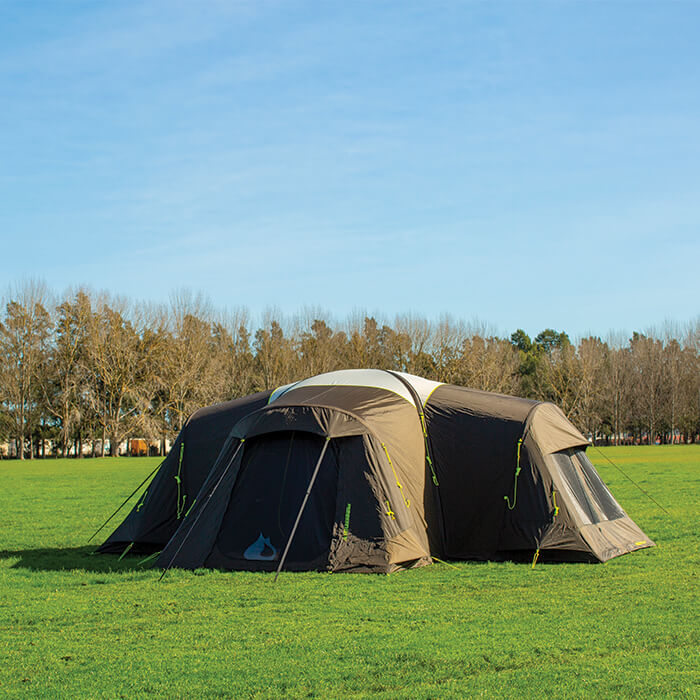
Camping in extreme weather conditions can be both exhilarating and challenging. Whether you’re facing high winds, heavy snowfall, or relentless rain, having a reliable and sturdy tent is crucial for a successful outdoor adventure. Inflatable tents have gained popularity in recent years, and for good reason. These versatile and durable shelters are designed to withstand the toughest weather conditions, providing campers with a safe haven in the midst of nature’s fury. If you’re planning a camping trip in extreme weather, here’s why inflatable tents are the way to go.
High Winds
One of the biggest challenges campers face in high-wind areas is tent stability. Traditional pole tents, while sturdy in mild conditions, may struggle to withstand strong gusts. Inflatable tents, on the other hand, are built to handle high winds with ease. Their robust construction, combined with the use of durable materials, allows them to remain steadfast even in blustery conditions.
Inflatable tents use air beams instead of traditional poles, providing a solid framework that flexes and absorbs the force of the wind. With the ability to inflate these beams to the desired pressure, you can ensure your tent maintains its structural integrity in the face of strong winds.
Additionally, many inflatable tents feature multiple guy lines and anchor points, allowing you to secure the tent firmly to the ground. This gives the tent added stability and prevents it from being blown away. So, whether you’re camping in the mountains or by the coast, an inflatable tent will keep you safe and comfortable, even in the most blustery conditions.
Rain
While rain is a common occurrence during camping trips, it can quickly turn into a hassle if your tent fails to keep you dry. The materials used in inflatable tents often have a high hydrostatic head rating, which measures their waterproofing capabilities. A higher hydrostatic head rating means the fabric can withstand greater water pressure before it starts to leak. Look for inflatable tents with a hydrostatic head rating of 1500mm or more to ensure optimal waterproofing.
Additionally, inflatable tents typically feature fully taped seams, preventing water from seeping through the stitching. This ensures that even during heavy downpours, your tent remains dry and secure. Some inflatable tents also come with optional rainfly or additional waterproof covers, providing an extra layer of protection against rain.
Proper ventilation is another crucial aspect of inflatable tents in rainy conditions. Look for tents with adjustable vents or mesh panels that allow for airflow while keeping rain out. This will prevent condensation buildup inside the tent, ensuring a comfortable and dry camping experience even during prolonged rain showers.
Ease of Setup
One of the great advantages of inflatable tents in extreme weather conditions is their quick and easy setup. When facing inclement weather, the last thing you want is to struggle with complicated pole systems and lengthy assembly processes. Inflatable tents eliminate these concerns, allowing you to set up your shelter efficiently and without hassle.
Inflatable tents often feature a single-point inflation system, where all the air beams can be inflated simultaneously. This means you can have your tent fully set up in a matter of minutes, allowing you to seek shelter quickly in adverse weather. Many inflatable tents also come with color-coded or numbered valves, making the inflation process even simpler.
Additionally, inflatable tents are lightweight and compact when deflated, making them easier to transport and store. This makes them a great option for backpackers or campers who want the convenience of a sturdy shelter without the bulkiness of traditional tent poles.
Additional Features
Inflatable tents for extreme weather conditions often come with additional features that enhance their functionality and comfort. Look for tents with vestibules or awnings that provide extra space for storing gear or seeking shelter from the elements. These additional areas can be invaluable during prolonged periods of rain or snow
Ventilation is also crucial in extreme weather conditions to prevent condensation and maintain a comfortable interior. Look for tents with adjustable vents or mesh panels that allow for airflow while keeping rain or snow out. Proper ventilation will help regulate temperature and reduce moisture buildup inside the tent.
Consider the size and layout of the tent as well. In extreme weather, having enough interior space to comfortably stay inside for longer periods can be a game-changer. Look for tents with spacious interiors and divided rooms, allowing for privacy and separate living areas.
In conclusion, inflatable tents are an excellent choice for camping in extreme weather conditions. Their sturdy construction, quick and easy setup, durability, and additional features make them a reliable and comfortable shelter when facing high winds, heavy snowfall, or relentless rain. By choosing an inflatable tent designed for extreme weather, you can take on any adventure nature throws at you with confidence and peace of mind. So pack your gear, grab your inflatable tent, and get ready to embrace the beauty and excitement of the great outdoors, no matter the weather!